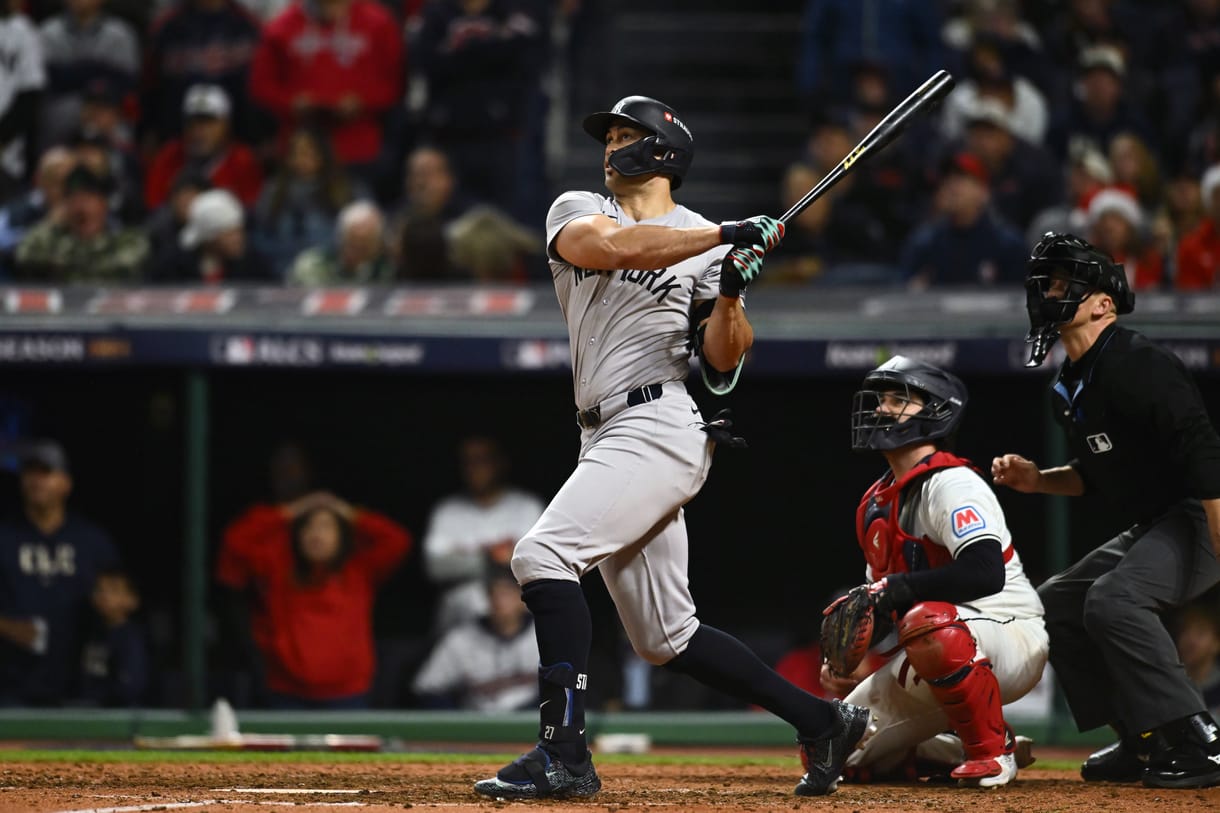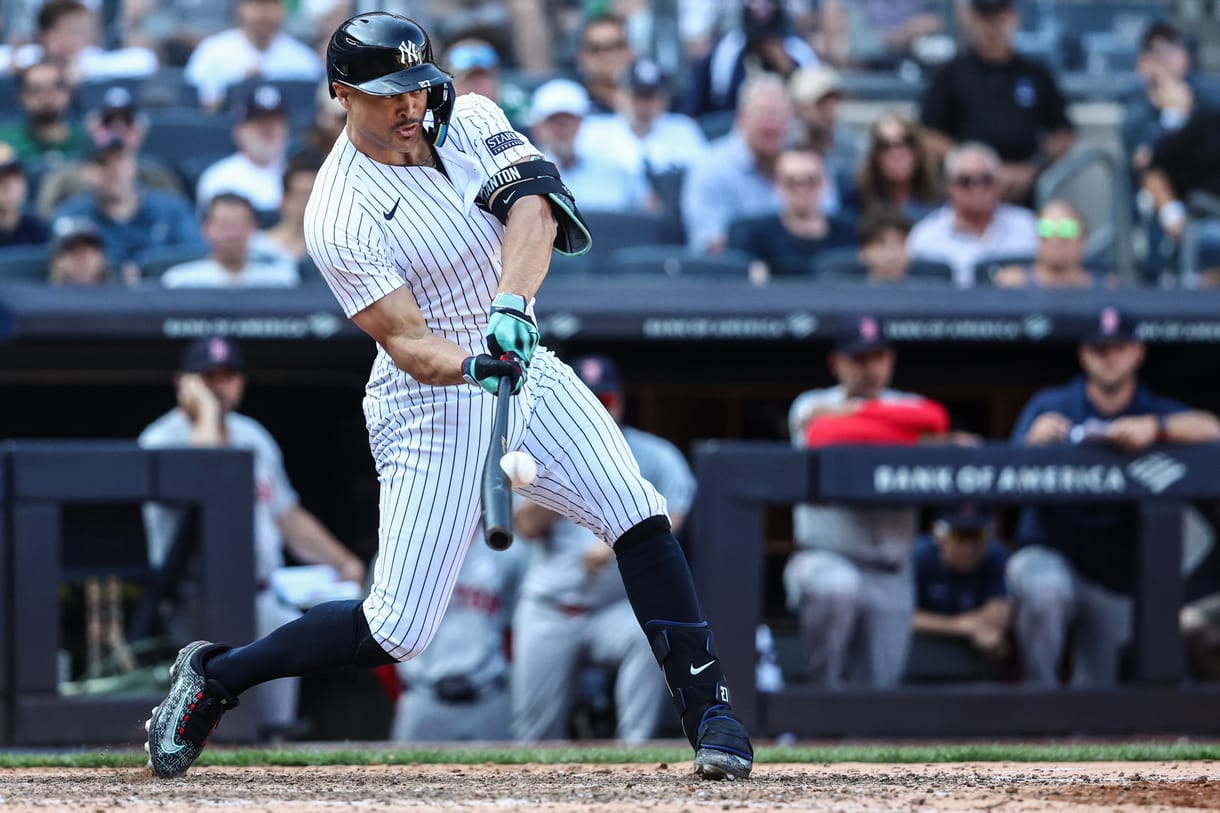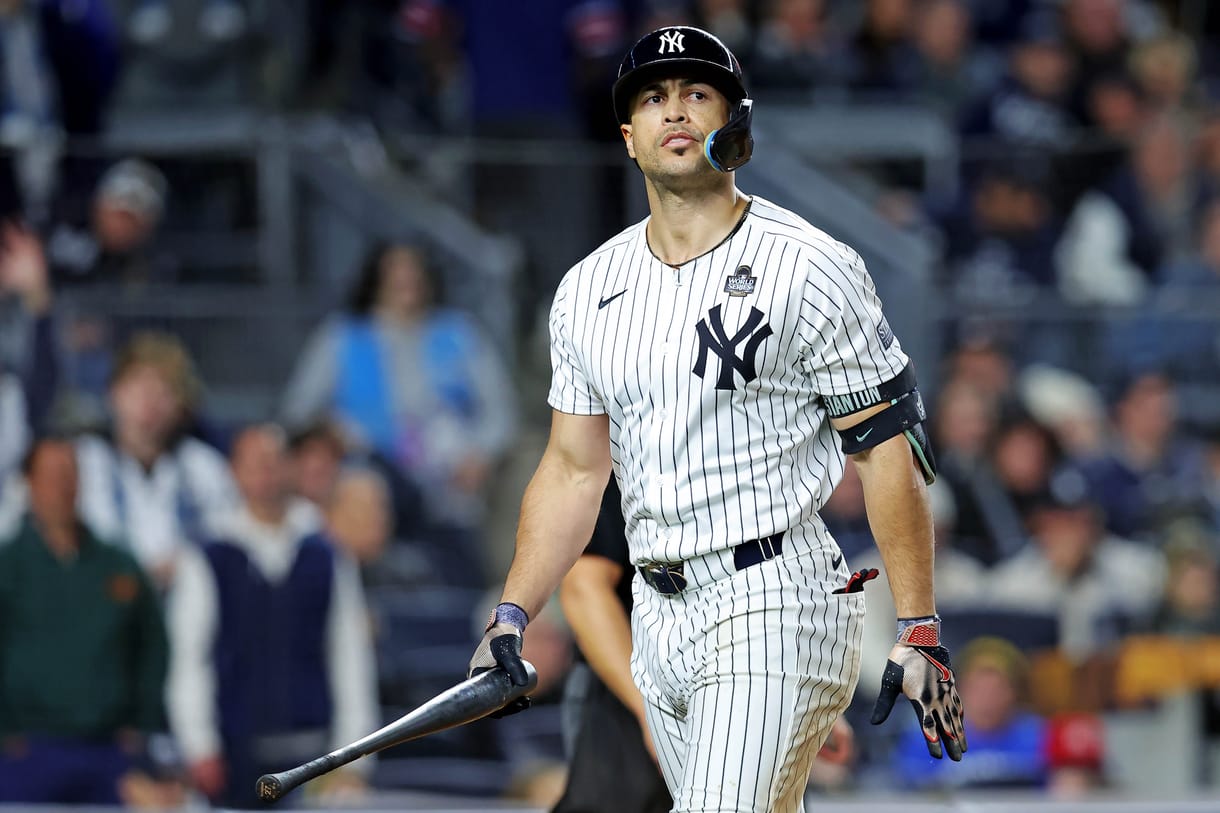
There’s something poetic about a comeback. Especially when it involves a player who once seemed carved from baseball’s version of granite.
Giancarlo Stanton, the 6’6″ titan with thunder in his bat, is finally suiting up again—this time for the Double-A Somerset Patriots.
It’s not just a rehab assignment. It’s a signal to New York Yankees fans, and maybe to himself, that the storm has passed—or at least, paused.
Stanton has spent the better part of a year in a grueling battle with his own body. Torn tendons in both elbows, the kind of injury that whispers, then shouts, “slow down.”

Even brushing his teeth or reaching for a glass became complicated. That’s how real this recovery was—far beyond box scores or stat lines.
Now, after months of doubt, silence, and whispered trade rumors, Stanton stood in front of reporters and said he’s “ready to rock.”
“Ready to rock.”@Yankees DH Giancarlo Stanton says he will take three to five at-bats in his first rehab game with Somerset today. pic.twitter.com/6HuSYabpxq
— Somerset Patriots (@SOMPatriots) June 10, 2025
There was something beautifully simple in that. No overanalysis. No scripted return speech. Just three words filled with weight.
Why the Yankees lineup still needs Stanton’s thunder
Sure, the Yankees are smashing baseballs like they’re made of glass this season. The offense has been a juggernaut, top-three in most major categories.
But Stanton brings something few others do—a raw, unsettling power that changes how pitchers approach the entire lineup.
Last season, he belted 27 home runs during the regular season, then added seven more in a playoff run that was nothing short of cinematic.
His playoff performance included a gaudy 183 wRC+—a stat that proves he wasn’t just “good,” he was elite when it mattered most.
Adding that bat back into the lineup isn’t just a luxury—it’s strategic. It forces opposing teams to pick their poison.
Stanton stretches lineups the way a heavy piano stretches a moving truck—it demands recalibration, rearrangement, and respect.

Rehab assignments: Where rust meets redemption
His assignment to Somerset isn’t about comfort. It’s about timing, rhythm, and reawakening instincts dulled by inactivity.
He’s expected to get three to five at-bats in today’s game.
Every pitch he sees down in Double-A is a step closer to his return. It’s not glamorous—but for Stanton, it’s essential.
It’s like sharpening a sword on gravel instead of a whetstone. Painful. Inconvenient. But sometimes necessary to recover the edge.
Expectations are high, but the Yankees aren’t rushing. They want Giancarlo ready—not just physically, but with his timing locked in.
Because when he comes back, there will be no easing into the fire. He’ll need to hit, and hit hard.
DH shuffle could challenge Yankees’ lineup balance
One looming question is what happens to the designated hitter spot once Stanton returns. The position isn’t exactly vacant.
Paul Goldschmidt is firmly planted at first base, and Ben Rice has been performing admirably as the current DH option.
Rice isn’t just filling space—he’s producing. That gives the Yankees a puzzle, albeit a welcome one.
How do you reintroduce Stanton without disrupting chemistry? Without weakening one area to strengthen another?
The Yankees may experiment with rotating DH duties, or even giving Stanton some limited outfield time—though his elbow situation complicates that.
It’s not a bad problem to have, but it’s a problem nonetheless. Talent logjams can cause friction if not managed delicately.
Stanton’s story, at this moment, feels less like a return and more like a reckoning. One where pain meets power—and purpose.
Popular reading:
Yankees traded star catcher to hated rival and he made them pay
!function(){var g=window;g.googletag=g.googletag||{},g.googletag.cmd=g.googletag.cmd||[],g.googletag.cmd.push(function(){g.googletag.pubads().setTargeting(“has-featured-video”,”true”)})}();